Beef Stew Vietnamese: A Spicy Journey Through Global Spice Traditions
When it comes to global comfort food, few dishes can rival the hearty, aromatic warmth of Vietnamese beef stew, or as locals call it, kho. This isn't your average pot of stew — this is a slow-cooked, spice-laden love letter from Vietnam's culinary soul.
In this article, we're diving deep into the world of spices that make Vietnamese beef stew so unforgettable. Whether you're a seasoned chef or just someone who appreciates a good simmering pot on a chilly day, prepare for a flavor-packed ride through one of Southeast Asia’s most beloved dishes.
Table of Contents
- The Spice Blueprint of Vietnamese Beef Stew
- Ingredient Breakdown: What Makes It Uniquely Vietnamese?
- Cooking Techniques That Elevate Flavor
- Pro Tips and Tricks for Perfect Beef Stew
- How Does It Compare Globally? A Spice Comparison Table
- Serving Suggestions & Pairings
- Common Mistakes (and How to Avoid Them)
- Conclusion: The Secret Behind That Irresistible Taste
The Spice Blueprint of Vietnamese Beef Stew
If there's one thing you should know about Vietnamese cuisine, it’s that spices are subtle but powerful. They don’t shout; they whisper in layers, building depth over time. So let’s take a peek at the spice cast:
- Black Pepper – Not chili hot, but warm and earthy. Vietnamese cooks often use freshly cracked black pepper instead of pre-ground, which makes a world of difference.
- Fish Sauce – Technically not a spice, but it’s the backbone of umami in any good kho dish.
- Ginger & Garlic – These aromatics form the base of many Asian stews and bring both heat and fragrance.
- Cinnamon & Star Anise – These spices add a hint of sweetness and complexity. Think of them as the hidden gems that give kho its signature perfume.
- Coconut Water or Soda – While not a spice, coconut water or even cola can be used to tenderize the meat and create a caramelized glaze during cooking.

Ingredient Breakdown: What Makes It Uniquely Vietnamese?
The key ingredients that set Vietnamese beef stew apart from other global stews include:
| Ingredient | Purpose | Alternative (Less Traditional) |
|---|---|---|
| Fish sauce | Salt + umami | Soy sauce |
| Brown sugar | Balances saltiness, creates caramelization | Honey or palm sugar |
| Coconut water | Mild sweetness, tenderizes meat | Water + sugar |
| Star anise | Aroma & depth | Fennel seeds |
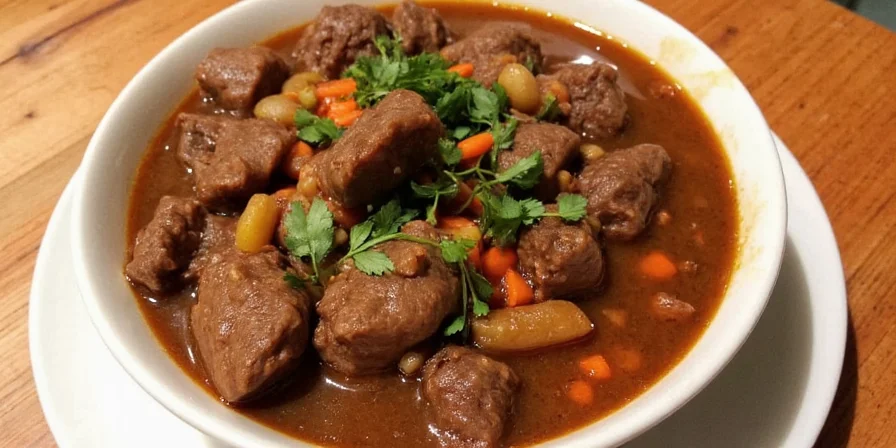
Cooking Techniques That Elevate Flavor
Let’s talk technique. Vietnamese beef stew may look simple, but it’s all in the execution:
- Marination Magic: Marinate the beef with fish sauce, sugar, garlic, and pepper for at least 30 minutes before cooking. Some recipes suggest marinating overnight for deeper penetration of flavors.
- Controlled Caramelization: Start by searing the meat until slightly browned. Then, allow the sugar and fish sauce to caramelize gently — not burn — for that glossy finish and rich taste.
- Slow Simmer: Cover and simmer on low heat for 45 minutes to 2 hours depending on the cut. Tougher cuts like chuck benefit from longer cooking times.
- Open-Lid Reduction: For a thicker, glossier sauce, remove the lid in the last 15–20 minutes and let the liquid reduce.
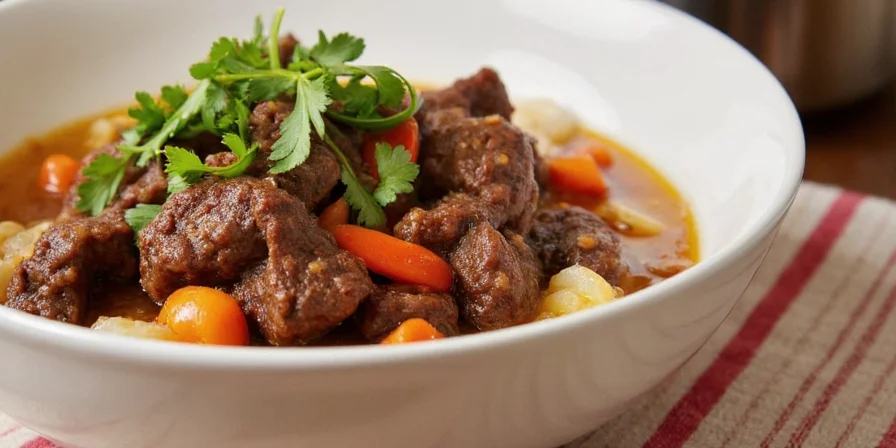
Pro Tips and Tricks for Perfect Beef Stew
- Use bone-in beef if possible. Bones add collagen and richness to the broth.
- Don’t rush the caramelization! Burnt sugar ruins everything — stir frequently and keep the heat low.
- Add a soft-boiled egg halfway through. It’s a classic addition in home-style kho and absorbs all the delicious flavors.
- Rest the meat after cooking. Letting it sit for 10–15 minutes allows the flavors to meld and settle.
- Serve with rice or baguette. Yes, you read that right — thanks to French influence, many Vietnamese enjoy kho with crusty bread.
How Does It Compare Globally? A Spice Comparison Table
To truly appreciate Vietnamese beef stew, it helps to see how it stacks up against similar dishes around the world. Here’s a quick spice comparison:
| Dish | Country | Main Spices | Heat Level | Signature Ingredient |
|---|---|---|---|---|
| Kho (Vietnam) | Vietnam | Black pepper, star anise, cinnamon | Low | Fish sauce |
| Gulyás (Goulash) | Hungary | Paprika, caraway | Medium | Sour cream |
| Rendang | Indonesia | Lemongrass, galangal, turmeric | Medium-High | Coconut milk |
| Ossobuco | Italy | Garlic, saffron, bay leaf | Low | Gremolata |
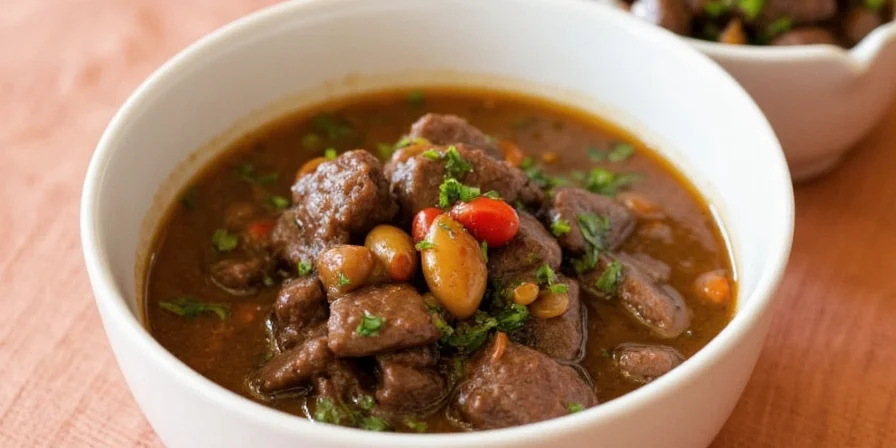
Serving Suggestions & Pairings
While Vietnamese beef stew is often eaten straight out of the pot, here are some ways to elevate your serving game:
- With Steamed Rice: Classic pairing. The rice balances the boldness of the stew perfectly.
- Over Crusty Bread: A nod to the French colonial influence. Try soaking the bread in the sauce — yes, it’s as good as it sounds.
- With Pickled Vegetables: Adds brightness and acidity to cut through the richness. Think pickled carrots, daikon, or mustard greens.
- With Fried Shallots: For extra crunch and a punch of onion flavor.
- As a Topping: Spoon it over noodles or even a fried rice bowl for a fusion twist.
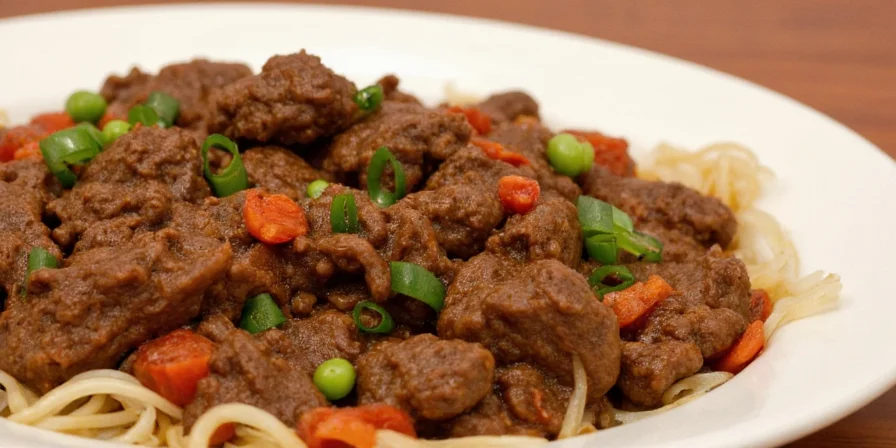
Common Mistakes (and How to Avoid Them)
Even experienced cooks can trip up when making Vietnamese beef stew. Here’s a quick list of what *not* to do:
- Overloading with chilies. Kho isn’t supposed to be spicy-hot — it’s warming, not fiery.
- Using too much fish sauce. Remember: it’s salty, so adjust accordingly and taste as you go.
- Skipping the marination step. It might seem optional, but marinating really brings out the depth of flavor.
- Cooking on high heat the entire time. You’ll end up with tough meat and scorched bottoms. Low and slow is the only way to go.
- Not adjusting for ingredient substitutions. If you’re using soy sauce instead of fish sauce, decrease salt elsewhere. Always balance!
Conclusion: The Secret Behind That Irresistible Taste
Vietnamese beef stew is more than just a dish — it’s a cultural experience wrapped in spices, stories, and centuries of tradition. From the delicate dance of sweet and salty to the gentle warmth of black pepper and star anise, every element works together to create something deeply comforting and uniquely Vietnamese.
Whether you're exploring global spice traditions or looking for your next dinner inspiration, Vietnamese beef stew deserves a spot on your table. With a little patience and the right blend of spices, you too can recreate that soul-warming goodness right in your own kitchen.
So grab your pot, gather your spices, and let the aroma of kho fill your home. Your taste buds — and your guests — will thank you.
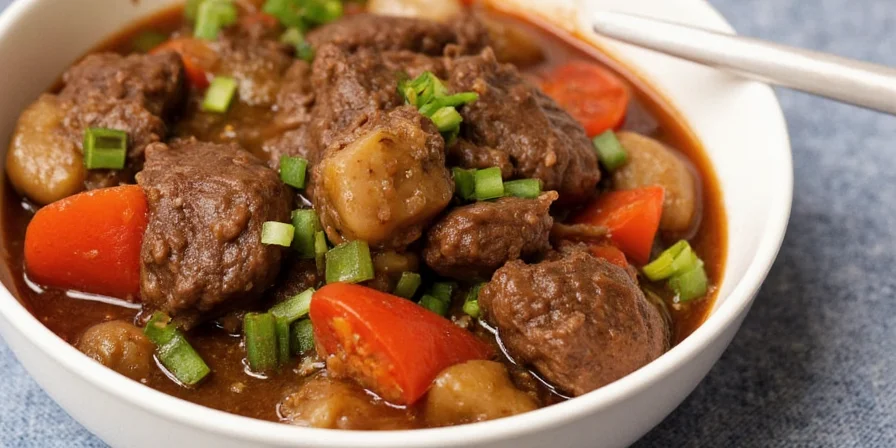










 浙公网安备
33010002000092号
浙公网安备
33010002000092号 浙B2-20120091-4
浙B2-20120091-4